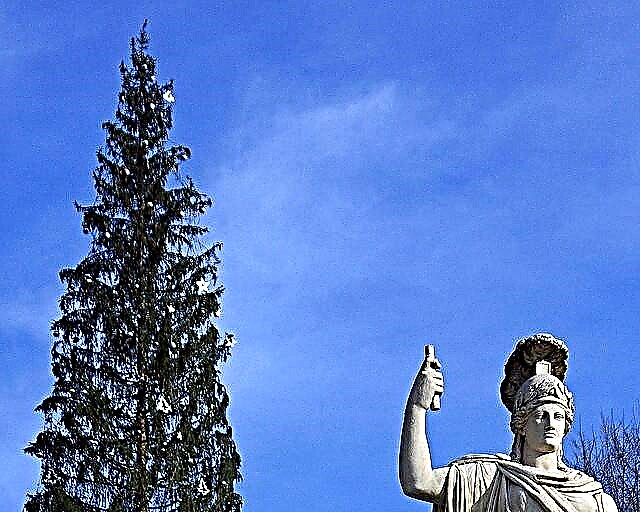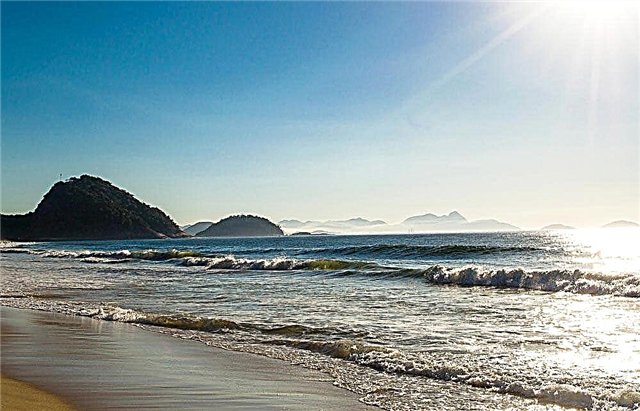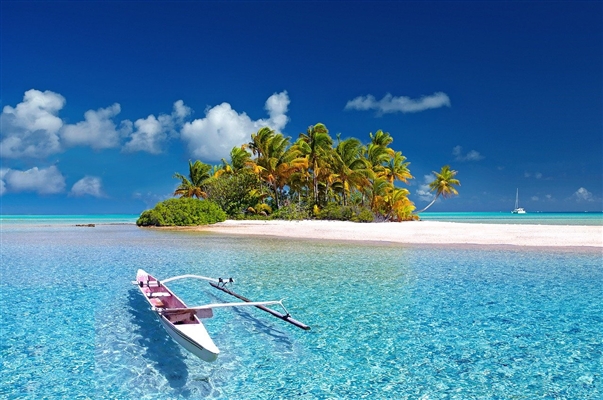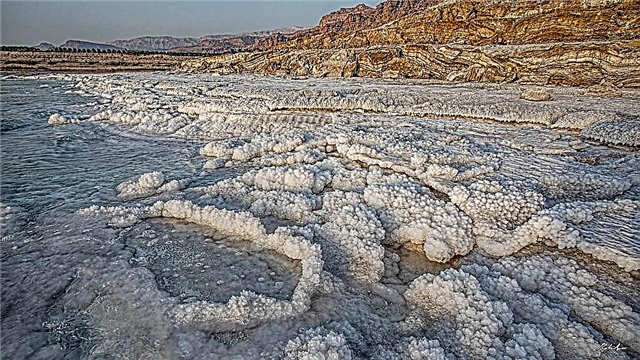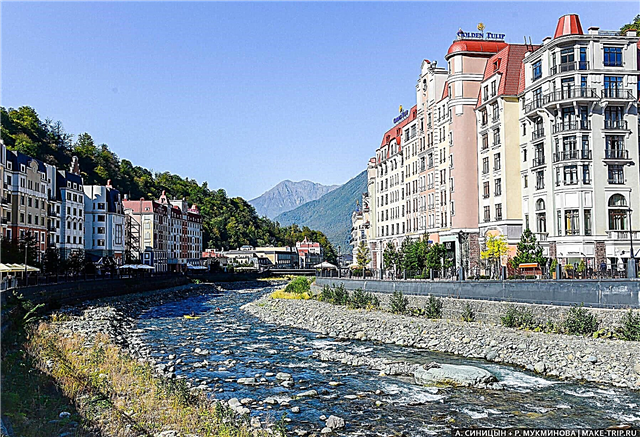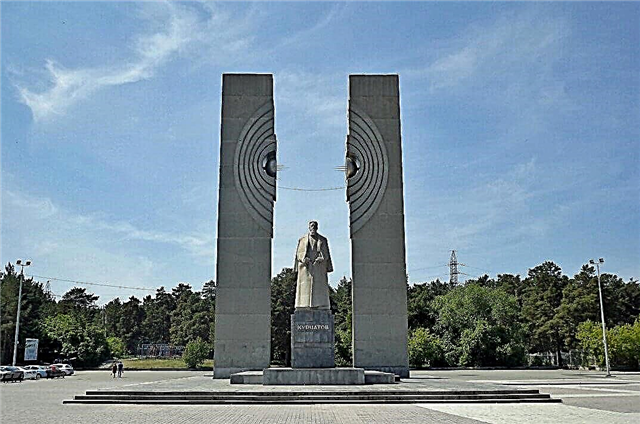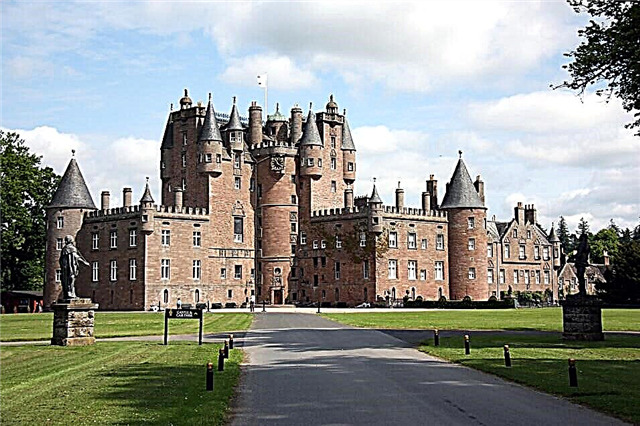Scotland's history is rich in military conflicts. Since the period of the Roman conquest, local tribes have fought both among themselves and against foreign invaders. During extended periods of fragmentation, up to the 15th century, cities and castles were fortified throughout the country. It was until the 15th century that most of the fortresses were built. Today, there are more than three thousand of them.
Scottish castles attract thousands of tourists every year for their historical value and architectural style. They reflect the harsh local mentality and traditions. Most of the castles are built in a unique, austere style that is characteristic only of Scotland. Fortresses were built with the expectation of long sieges, so most of them are located next to water bodies and are distinguished by large-scale defensive structures.
The most interesting ancient castles in Scotland
List, photos with titles and descriptions!
Edinburgh
In the center of Edinburgh, on top of an extinct volcano, Castle Rock, is the main castle of the capital of Scotland. It was erected in the XII century and fortified in the XVII, for protection from artillery shelling. Earlier, under the walls of the castle there was a lake that protected one of the walls. Later, it was drained, and in its place a new district of Edinburgh was built. The chapel of Saint Margaret is erected here, and the Royal parades of military bands are held every year.

Glamis
In the 14th century, a fortress was built in Angus County, which later became the main royal estate. In the 15th century, fortified towers were completed, but already in the 18th century, the castle was no longer used for its intended purpose and became an exclusively peaceful structure. There are many myths around the castle. According to one of them, in one of the corridors there is a secret door leading to a room where Scottish nobles played cards with the devil.
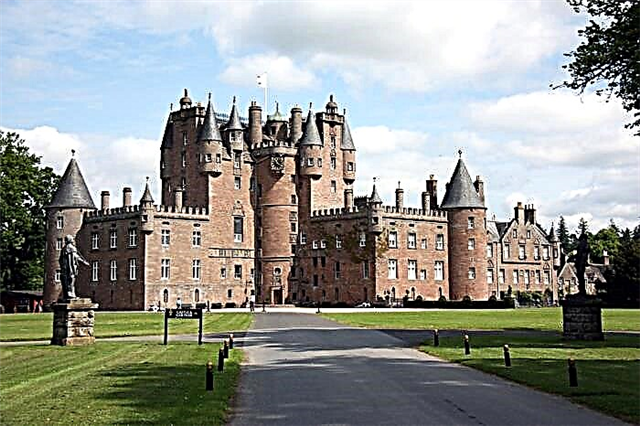
Sterling
In the city of Sterling, on the Castle Hill, there is the castle of the same name. It is one of the largest and most important in Scotland. The main fortifications were built in the 15th century. You can go to Sterling only from one side - from the rest, the steep cliffs of the Castle Hill prevent the approach. Several rulers of Scotland were crowned here, including Mary Stuart.

Balmoral
The castle was erected at the end of the XIV century, on the banks of the Di River. In the middle of the 19th century, the architect William Smith carried out a large-scale reconstruction, expanding and strengthening the castle. In the Middle Ages, Balmoral was the seat of Scottish rulers, and in the 19th century Queen Victoria moved here. The royal family still visits the fortress every summer.

Eilean Donan
The name of the castle became the name of the hermit Donan, who lived on the cape since the 8th century. The fortress was erected in the 13th century and remained a strategically important site until the 18th century. The restoration was completed in 1983. Eilean Donan is located on the banks of the Loch Duich Fjord and is one of the most picturesque castles in Scotland. It has been featured in many motion pictures and is popular with tourists.

Dunnottar
Back in the 5th century, Saint Ninian founded one of the first Christian churches in Scotland here. According to separate testimonies, already in the 7th century, a fortress was besieged on a cliff, not far from the modern city of Stonehaven. Since 1100, Dunnotar has become the center of Scotland - here William I moved his residence. The castle was filmed in the film, like many other Scottish fortresses. In 2015, the film "Victor Frankenstein" was filmed here.

Inverari
On the shores of Loch Fyne, one of the largest lakes in Scotland, one of the youngest local castles was built in the 18th century. Inverari is one of the earliest fortresses built in the Gothic style. For the construction of the castle, the whole village was moved more than a kilometer from it. Inverari is home to the Dining and Armory Halls, which are popular with tourists. The walls of the Dining Room are decorated with picturesque paintings, and the Armory is the tallest in Scotland.

Danrobin
The first mention of the castle in Sutherland County dates back to the early 15th century. But the modern mansion was built in 1845. It was in 1845 that Dunrobin was rebuilt in the style of the French Renaissance, and gardens were laid out around it. During the First World War, the castle was used as a military hospital, in the middle of the 20th century it housed a boarding school, and since 1973 Danrobin has been open to tourists. In 1975 Stanley Kubrick filmed Barry Lyndon in Danrobin.

Dunvegan
The castle was erected on the Isle of Skye in 1220. The advantageous strategic location allowed the defenders of the fortress to easily withstand long-term sieges. Dunvegan has retained its architectural style from the early Middle Ages, but the interior style has been significantly updated during the restoration. There are gardens open to visitors. Guided tours of the castle and gardens.

Arquart
One of the largest fortresses in Scotland is located on the shores of the famous Loch Ness. The exact date of construction is unknown, but the castle was built from the 13th to the 16th century. But references to fortifications here date back to an even earlier period. In the 17th century, the Jacobites laid siege to and destroyed Arkarth. It has survived to this day in ruins. The gate and the main tower are the best preserved.

Blair
In 1269, when the owner of the fortress, Count Atoll, was on a crusade, Lord Badenoch began building a castle on his land. After the return of the count, the land with the already rebuilt fortress was returned to its rightful owner. Blair withstood the siege during the Jacobite uprising of the 18th century, and during the First World War there was a hospital here. After the end of the war, the descendants of the Earl of Atoll moved from the estate to private apartments. Later, the castle was opened to visitors.

Craigivar
The seven-story castle was built in the medieval architectural style of the Scottish barons. It was erected in the Aberdeenshire area in 1626. At the beginning of the 20th century, a hospital was located here. Gardens are laid out around the fortress. The stucco molding of Craigivar Castle is considered one of the finest in Scotland. The castle is only open to visitors during the summer months.

Dong
The fortress was built in the Stirling area in the XIV century. She soon became state property and became one of the royal hunting lodges. During the first two Jacobite uprisings, a government garrison was stationed in the Dun. And in 1745, the Jacobites managed to capture the castle and equip a prison in it. In the 20th century, Dong was transferred to the state. Some scenes from the Game of Thrones series were filmed in the castle.

Ballindalloch
From the 16th century to the present day, the castle belongs to the Grant clan. It was built in 1546 and has been preserved in its original form. Ballindalloch burned down only in the 17th century, but after that it was rebuilt. According to local superstitions, the castle is home to several ghosts. The castle workers believe that the souls of the former owners of the castle still dwell within its walls. These stories are happily told to visitors to Ballindalloch.

Kinloh
The castle was erected in 1900 on the island of Ram. It belonged to the textile industrialist George Ballou and became his personal residence. There is a visitor's hotel next to the castle. The main attractions of Kinloch are the Orchestrion musical instrument and the collection of gifts from the Japanese emperor.

Tirlistein
The fortress is located near the city of Loder and is famous for its gardens and parks. Tirlistain was founded in the 13th century. But most of the fortifications that have survived to this day were completed in the 16th century. The castle has been renovated and renovated several times. The interior rooms of the fortress contain extensive collections of paintings, china, furniture and toys.

Kodor
According to legend, the owner of a neighboring castle decided to build a new fortress for himself, but did not know where to build it. He had a dream that he repeated in his life.Having released a donkey for a day with a sack of gold on its back, in the evening he found an animal sleeping under an old tree. It was on this site that the Kodor Castle was erected in the 16th century. And the remains of the tree are still kept in the basements of the castle.

Kilhurn
The ruins of the fortress are located on the shores of Loch Ave, the longest Scottish lake. Kilhurn was built in the 15th century on a small island near the coast. By the 19th century, the water level dropped and it became possible to walk to the castle. Only a small part of the fortress has survived to this day. The remains of the once majestic castle are accessible to tourists only in summer.

Blackness
The castle was built on the Fort River in 1449. For most of its history, Blackness has been a prison. Criminals, Covenanters who advocated limiting the power of the monarch, and prisoners of war were sent here. After the unification of England and Scotland, a small garrison was located here, and the prison was liquidated. Blackness has been renovated many times. "Hamlet" directed by Zefirelli was filmed on the territory of the castle. The fortress is open to visitors all year round.

Kerlaverok
Around 1270, a new castle was built next to the old wooden fort. He belonged to the influential Maxwell clan. At the beginning of the XIV century, the English king Edward I began the conquest of Scotland. Kerlaverok was also taken. The castle took part in the Anglo-Scottish wars and changed hands many times. One of the few in all of Europe, Kerlaverok has the shape of an almost regular triangle and has an exclusively military purpose.

Krates
The castle was built at the beginning of the 16th century. It is rightfully considered one of the outstanding architectural sites of Scotland. Gardens are laid out around the castle, attracting thousands of tourists. Local legend is the ghost of the slain maid, named the Green Lady. He is rumored to emerge from the green mist and appear to visitors like the silhouette of a girl with a child.

Bremar
The castle was originally built as a hunting lodge. In the 17th century, it was burned by the Jacobites. In the course of further uprisings, Bremar repeatedly became the site of revolts and gatherings of the Jacobites. After successfully suppressing the unrest, the royal army established a garrison here. The castle was handed over to the owners only in the 19th century. Bremar was opened to tourists relatively recently. Only in 2008 did the first tourists come here.

Craigmillar
In the 14th century, a family estate was built by a member of the Preston family. But soon it turned into a full-fledged fortress. Towers were built and a moat was dug. During the wars with England, Craigmillar was surrendered to the British and plundered. After the 16th century, it became empty and only in the 20th century was it transferred to the state. The castle attracts tourists with its pristine and well-preserved facade, which conveys the architectural trends of that time.

Edzel
The castle is famous for its ancient garden, which houses a wall with carved plant niches. The garden was laid out over 400 years ago and is still being maintained. On its territory there are numerous flower beds, flower beds and sculptures. The castle itself was built at the end of the 15th century. Only the main buildings, which are in a dilapidated state, have survived to this day, so most tourists come here precisely for the sake of the gardens.

Brodick
The fortress was erected in the city of the same name, on the Isle of Arran. Due to its favorable location, Brodick was besieged many times during the Scottish internecine conflicts. The castle was also affected during the Anglo-Scottish Wars. In the middle of the 17th century, the castle was captured by the troops of Oliver Cromwell. For hundreds of years Brodick belonged to the Hamilton family, so today there are some heirlooms and artifacts here.

Kelly
The exact date of construction is unknown, but the first mentions of fortifications on the site of the modern castle date back to 1150. The fortress passed from hand to hand many times and was rebuilt. The royal residence was also located here. In the XX century, Kelly was transferred to the state to maintain order on the territory and preserve buildings. The castle has survived to this day in ruins.

Inverness
In the 11th century, the first wooden fortifications were built by the Scottish king Malcolm III at the mouth of the Ness. Later, in the XII century, modern Inverness was built here. In the 17th and 18th centuries, the fortress was besieged and captured several times. And in 1746, the Jacobite army partially destroyed the castle. In 1835, a large-scale reconstruction was carried out here. Only part of the walls and wells remained from the ancient castle, and the rest of the buildings were renovated. Inverness is closed to visitors these days.

Dirleton
In East Lothian, near the town of Dirleton, there is a castle of the same name. It was built in the 13th century and belonged to several noble families. During the Revolutionary Wars, Dirleton was repeatedly captured, and several years after the completion of construction, it was destroyed. The order to destroy some of the buildings was given by the Scottish monarch, Robert the Bruce. The castle remains in ruins, next to it there are gardens and parks open to tourists all year round.

Cullin
The modern buildings of the castle date back to the 18th century, but mentions of fortifications in its place date back to the 4th-5th centuries. Kullin is located on the coast - one of the facades overlooks a picturesque fjord. The fortress is popular with tourists. There are hotels and cafes nearby. There is a museum on the territory of the castle. Traditional piper concerts are also regularly held in Kullin.

Dram
The castle tower, dating from the 13th century, is considered one of the oldest in Scotland. The castle was completed in the 17th and 19th centuries. Drum is located in Aberdeenshire, in the western part of Scotland. During the restoration work, secret rooms and a previously unknown passage to the main hall were discovered. The fortress is open to visitors throughout the summer; there is a historical museum on its territory.

Rothesay
At the beginning of the XIII century, not far from the small town of Rotsey, 4 towers were erected, connected by fortress walls. Later, a gallery was built here and a moat was dug. Rothesay suffered Norman invasions, but was destroyed in the 17th century. Due to the unusual architecture and shape of the building, the fortress has become popular among tourists. Rothesay is always open to visitors.

Fraser
In 1636, Michael Fraser completed the construction of his own castle. It has been restored many times and has survived to this day. Gardens and parks are laid out around the fortress. According to local legend, a princess was killed in a dream in a castle room. The assassins carried the girl down the stairs, leaving bloody footprints all over the castle. The locals were never able to wash the blood off the steps, so the stairs were covered with wood paneling.

Hermitage
The castle was built in the 13th century by Nicolas de Suli. The Hermitage has survived to this day in a dilapidated state. William, son of Nicholas, made the castle the subject of various rumors and legends. According to local superstition, he practiced black magic. Later, William was executed for conspiracy against King Robert I. Legend has it that William's ghost still appears in his house every 7 years and wanders the castle.

Stalker
One of the few castles that have survived to this day in their original form, was built at the beginning of the 14th century on an island near the west Scottish coast. The King of Scotland, James IV, regularly stayed here. As a relative of the owner of the castle, the monarch often came to the castle as to a hunting lodge. The stalker was restored and completed several times. Today it is in good condition, but not completely preserved.

Coharf
The castle was built in the middle of the 16th century. He changed hands several times during the internecine wars. It was located next to strategically important trade routes, therefore it was often besieged. Later, at the beginning of the 17th century, the fortress was captured by bandits. Later it was returned to its rightful owners, and at the beginning of the 19th century a farm was built in Kogarf.


